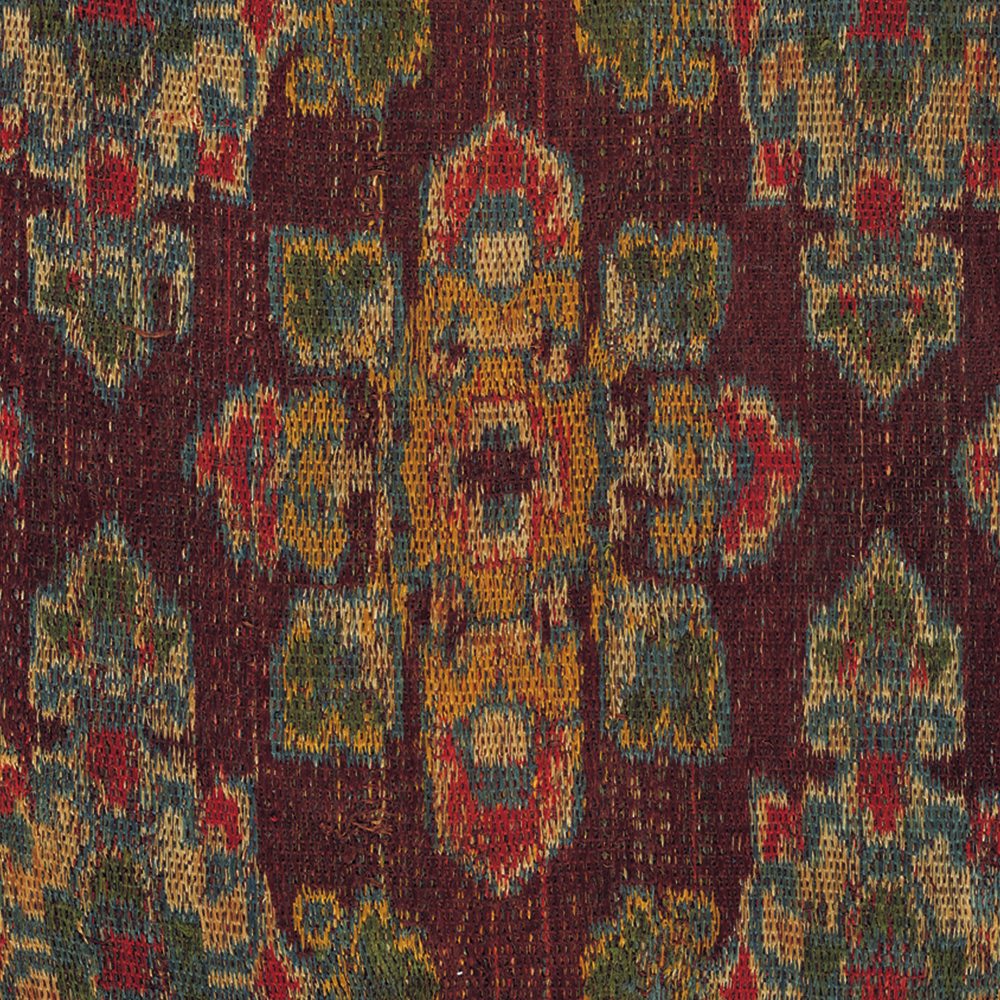錦(にしき)nishiki
二色以上の色糸で文様(もんよう)を織り出した絹織物。経糸(たていと)に色糸を用い、緯糸(ぬきいと)を単色にして織り上げたものを経錦(たてにしき) 、逆に経糸を単色、緯糸に色糸を用いて織り上げたものを緯錦(ぬきにしき)という。経錦は紀元前の中国で始められ後漢に発達したが、初唐頃以降は、色糸の制限がなく多彩な文様表現が可能な緯錦に取って代わられた。
Nishiki
This generic term for fabrics with a multi colored woven pattern refers to several different weave structures. The nishiki in the Shōsō-in are compound patterned weaves with more than one set of warps and of wefts. Patterns include composite flowers, scrolls, animal and bird figures, and geometric repeats and use from two to five different colors. More complex ones are thought to have been woven on the continent. Tate nishiki, which tend to be older, refers to warp-faced compound weaves. Nishiki with vertical bands of color are called chōhankin. More common in the Shōsō-in are the nuki nishiki, or weft-faced compound weaves, which generally have a twill foundation structure, as in a samite. The weft-faced nishiki have two types of warps: the binding warp visible on the surface, and a hidden warp pushing the colored weft yarns either to the obverse or the reverse to create the vari-colored pattern. The function of the hidden warps changes after the Nara period, making the structure of Heian period nuki nishiki different (like Liao samite). These double warp or weft compound weaves should not be confused with brocaded patterning, which is also referred to as nishiki.

Shitōzu for a Flute Player (South Section 124)


